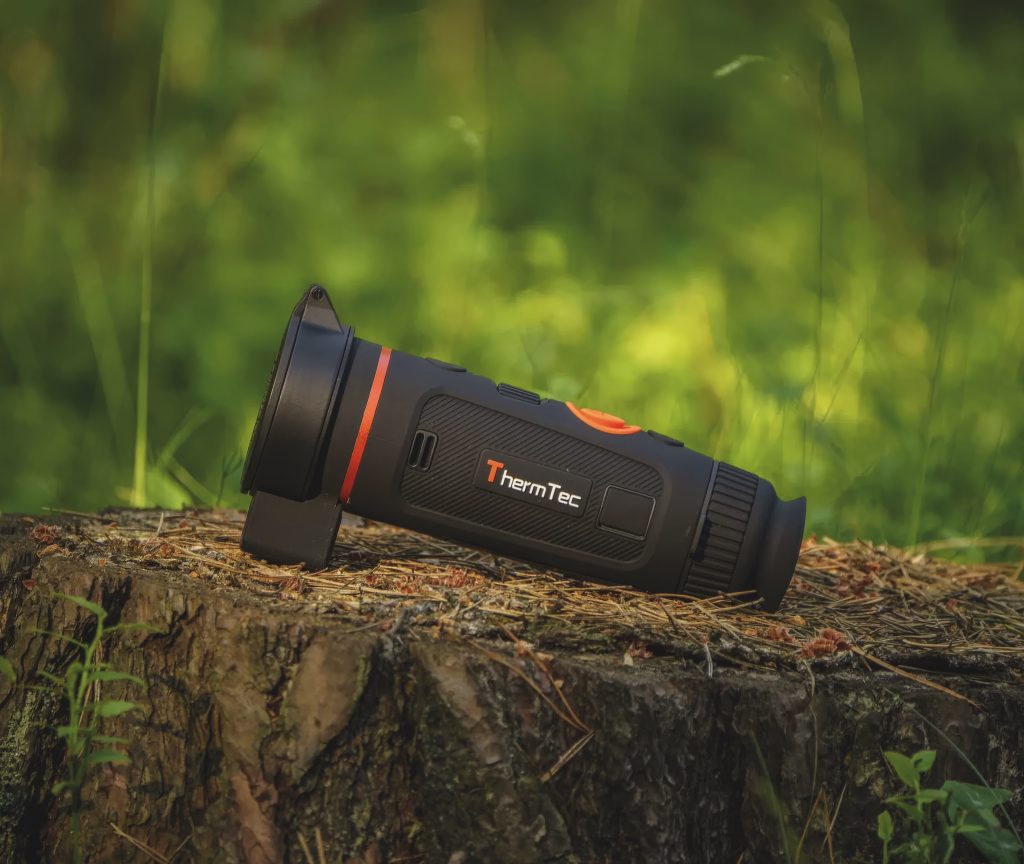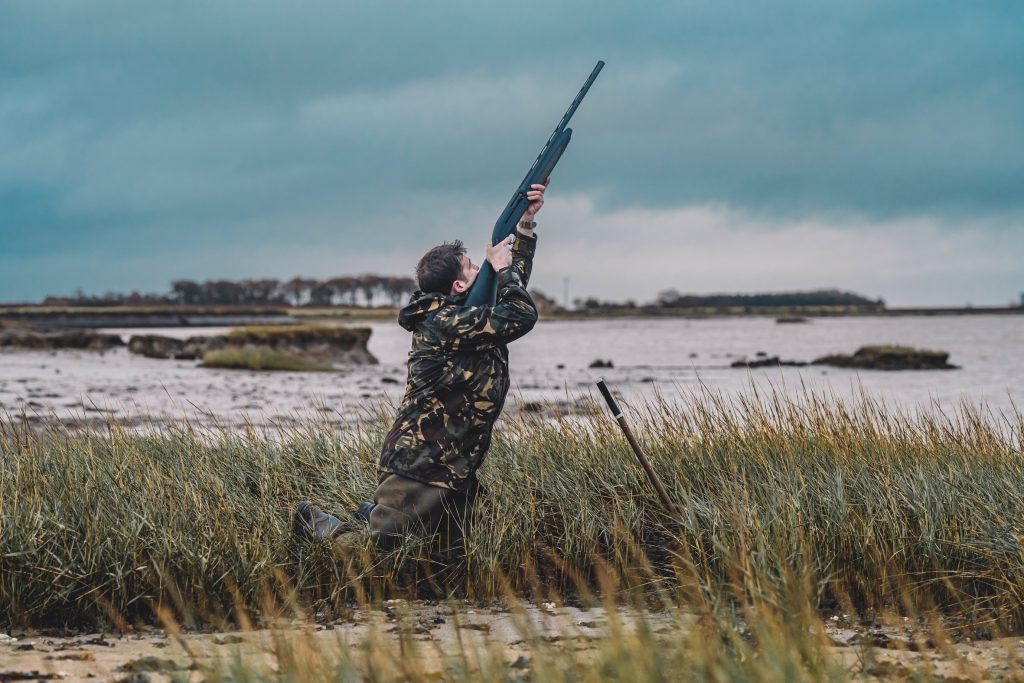Win CENS ProFlex DX5 earplugs worth £1,149 – enter here
Why sustainable ammunition days are a superb introduction to steel shot
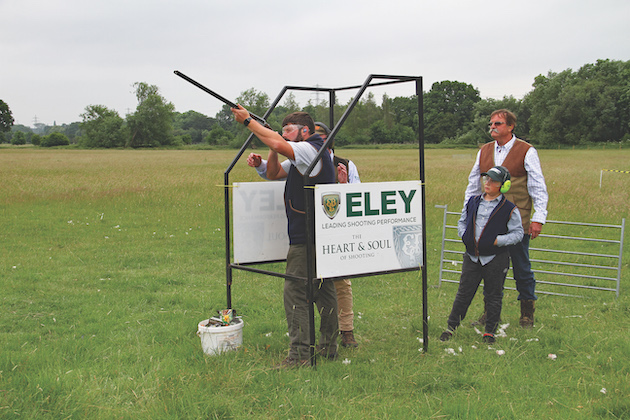 Three generations learning to use steel loads; shooting is Padbury`s Shoot captain Curtis Rodgers and son Josh
Three generations learning to use steel loads; shooting is Padbury`s Shoot captain Curtis Rodgers and son Josh
As the five-year transition to non-lead shot for live quarry shooting continues, BASC has taken the initiative and organised a series of Sustainable Ammunition Days around the UK. These workshops aim to provide accurate, honest and practical experience of lead-free ammunition for your shotgun on a simulated game layout.
Shooters’ concerns about lead alternatives include whether is it suitable and safe for their shotguns, whether it will kill humanely and whether it patterns well. On Sustainable Ammunition Days, BASC staff look to allay these uncertainties and more.
The move from lead to steel, bismuth or tungsten shot is gathering pace, with more manufacturers offering specific loads and alternatives to your regular game and clay ammunition.
My son Jake and I attended a regional workday at Padbury Hill Farm in Buckinghamshire, where our host Justin Farrington Smith, the land owner, and keeper Matt Catt ran a superb, friendly game shoot. BASC staff in attendance included Dr Peter Marshall, head of training and education, Hannah Turner, regional officer for the south-east, and shotgun coach Tony Butcher.
Matt and Justin set up three testing clay simulations – a double bird towards the shooter, a high and fast pheasant that was more like an Exocet missile, and a springing teal – to really test the mettle of the steel shot loads and participants.
Before we started, Tony checked over our guns to show us the differing proof marks and suitability for steel shot. There are two steel shot variants. Standard steel is safe to use in No 4 or smaller so long as your gun is nitro proofed and can fire modern lead shot. High-performance steel requires a gun with the fleur-de-lys proof mark and ‘steel shot’ stamped on the barrel.
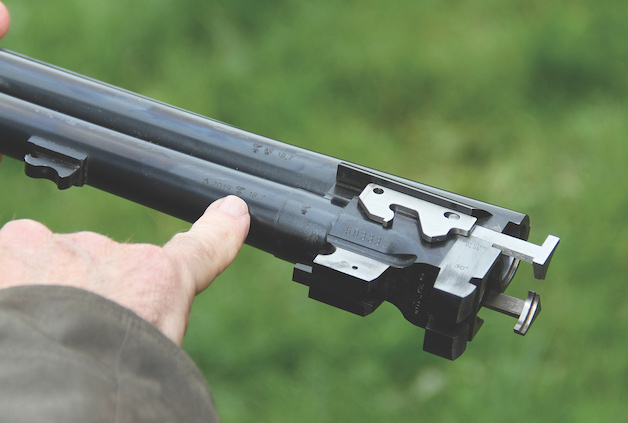
Guns with a fleur-de-lys proof mark can handle HP steel
Choke
Chokes are an issue because steel shot should only be fired through guns with chokes of half or less for the high-performance ammunition (multichoked guns are marked thus) while the standard steel shot loads – in other words, No 3 or smaller – can be shot through any choke. In fact, steel shot through a half choke performs much like a full-choke lead shot would, so more open is safer and still usable. The use of more than half choke can blow your patterns and consequently reduce performance.
Also, due to the density of different steel, if you usually shoot a load with No 6 shot, when using the steel alternative you should choose a shot size two sizes bigger – in other words, No 4 – for the same ballistic performance. You will notice the patterns are tighter, so you still have a good lethal percentage pattern using the larger steel overall, despite having fewer pellets than an equivalent lead load.
Bismuth and tungsten are expensive but are denser than steel and so offer an alternative, especially for users of classic side-by-side shotguns.
Cartridge profiles
Steel is a lighter material than lead and will have different ballistic properties, but these BASC training days show you their effective use and help dispel any doubts.
Tony explained the different cartridges to be used on the day, and through their use on clays you could see their performance as well as examine the biodegradable wads after firing, which was really interesting.
First up were the Eley VIP Steel Pro Eco with recyclable plastic casing, 28g of soft iron (32g option available) and a wad made from organic materials. The price is £376 per 1,000.
Next were the BioAmmo Rex Steel, with a load of 28g (30g, 32g and 34g available), a compostable case and corn starch wad. These cartridges cost £399 per 1,000.
Finally, the Jocker Bio Sport Competition cartridge, the cheapest steel load of the bunch, is priced at £221 per 1,000 and uses a light load of 21g and a paper wad.
One of the biggest advantages is the biodegradable wad, which is non-toxic. Combine this with a recyclable plastic case that can be recycled and you have a truly sustainable, non-toxic cartridge.
I bought some pattern boards to test the Eley and Jocker loads to ascertain their effectiveness at 30 yards with a Browning Shadow 12-bore at half choke.
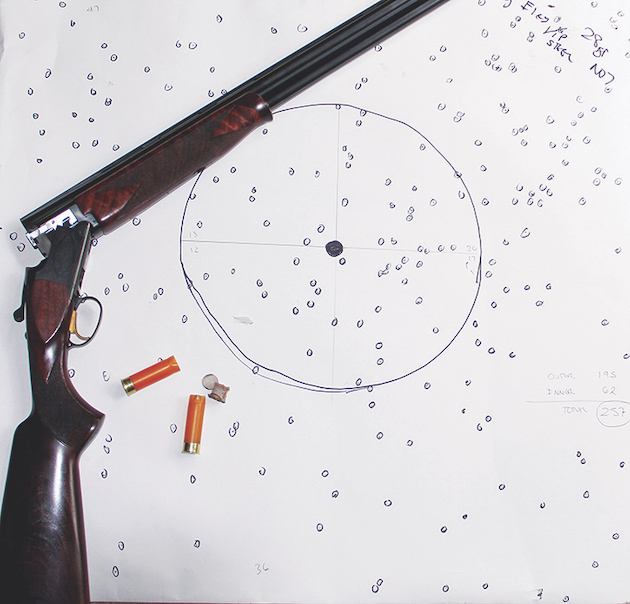
The steel loads gave amazingly even and dense shot patterns
Pattern boards
The Eley VIP Steel Pro Eco shot a 28g load of No 7 (No 3 and No 5 available) so they are equivalent to a normal clay load of 28g lead shot. On the board we had a total of 257 pellet strikes, with 195 outer hits and 62 inner strikes and only a few holes, but overall a nice consistent pattern and great coverage of the 30in pattern board.
The Jocker Bio Sport, even with the lighter 21g (24g and 28g available) loading of No 7 shot, also achieved a lovely even pattern with a total of 191 pellet strikes on the 30in board. The outer pellet count was 136 hits and the inner 15in ring achieved 55 pellet strikes, an effective and inexpensive load. In fact, the inner 15in sector is split into four quadrants and the Jocker distributed 14, 13, 13 and 15 pellets evenly and very close to the centre too. Excellent results for this steel load.
You will also note that, as with most steel loads, the shot pattern can be slightly higher-placed, but that is unlikely to cause issues.
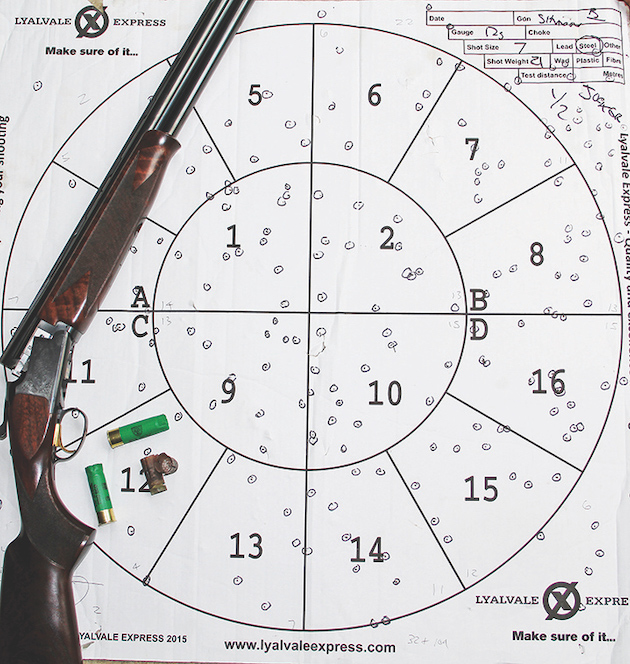
The Eley load performed well on the pattern board
To the clays
Switching our attention to the clays, Tony guided Jake through the first trap, which was the flushed pheasant pairs over the hedgerow. Despite their speed – and they were fast – the Eley VIP loads smoked the clays on half choke exactly the same as would a standard lead load. The real surprise was that Jake hit more with the lighter 21g Jocker load and the confetti of the paper wad in the air after firing proved its green credentials – a great load.
The next trap was to test effectiveness against high birds, this time flying left to right and fast too. Tony juggled the different 12-bore loads in his pocket as a blind test, and so long as the correct lead was observed, all the cartridges were breaking clays. We forewent the spring teal to pattern the cartridges, but suffice to say, both the instruction and cartridges were impressive.
Conclusion
Attending a Sustainable Ammunition Day with BASC is probably the best £12 you will spend. It includes a check of your gun, 25 cartridges, clays and invaluable knowledge from experts in the field. All the participants – and it was a good turnout – had a superb day and gained an honest assessment of the inevitable switch to steel shot.
I learned a lot too because most of my research is focused on rifle ballistics. This workshop put my mind at rest regarding the switch to non-lead loads, so if you have any doubts, give it a try.
Related Articles
Get the latest news delivered direct to your door
Subscribe to Shooting Times & Country
Discover the ultimate companion for field sports enthusiasts with Shooting Times & Country Magazine, the UK’s leading weekly publication that has been at the forefront of shooting culture since 1882. Subscribers gain access to expert tips, comprehensive gear reviews, seasonal advice and a vibrant community of like-minded shooters.
Save on shop price when you subscribe with weekly issues featuring in-depth articles on gundog training, exclusive member offers and access to the digital back issue library. A Shooting Times & Country subscription is more than a magazine, don’t just read about the countryside; immerse yourself in its most authoritative and engaging publication.






